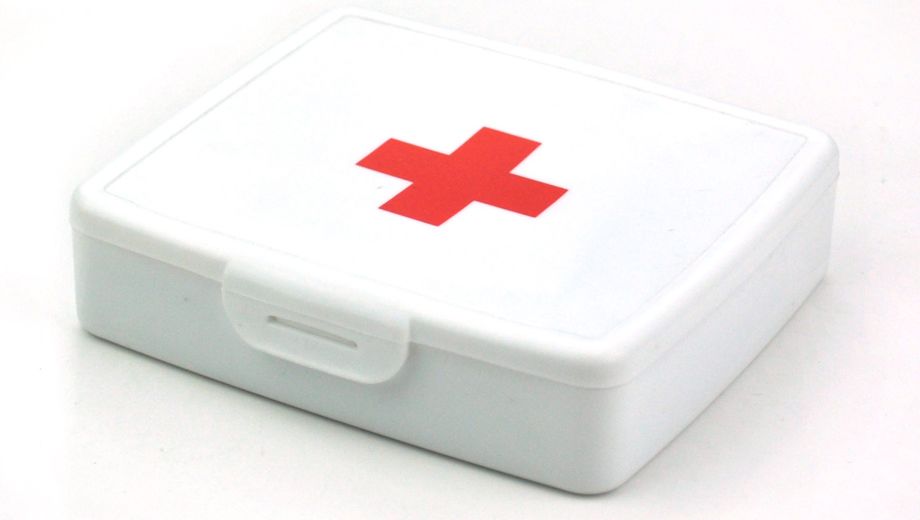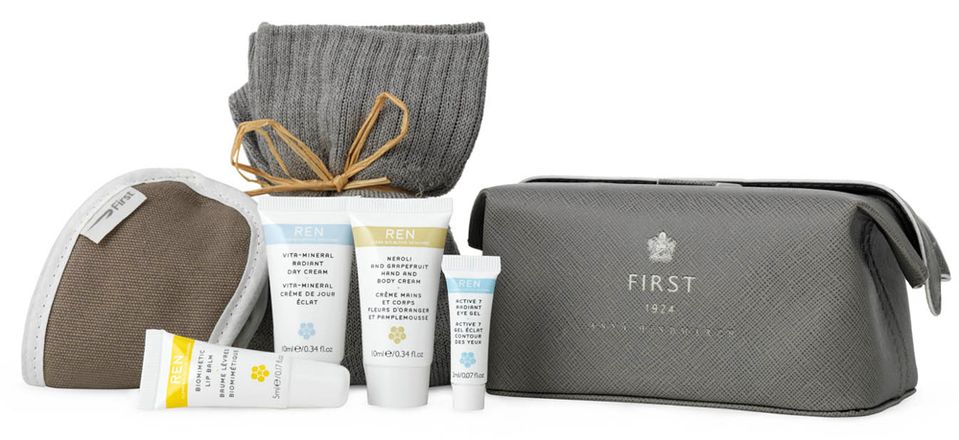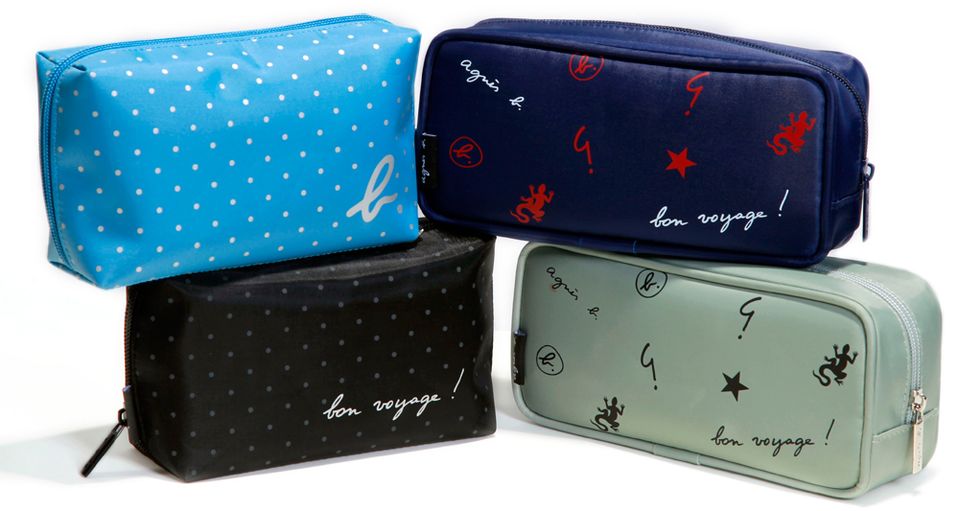Travel tip: putting together a go-anywhere medicine kit

The more you travel, the more important it is to put together a small medicine box to act as your first aid kit on the road.
After all, the last thing you need is to be beset by petty human ills just when you need to be at your powerhouse best to knock over that diary full of business meetings, lunches and dinners.
First step: grab an amenities bag
You don't need to bother buying a special case for your medical kit. The inflight amenity kit which most airlines hand out in business or first class will do nicely.
British Airway's first class kit is a favourite because of its hard sided construction and solid-snap opening mechanism, but most soft-sided bags such as those of Qantas or Cathay Pacific (shown below) are up to the task – which is to keep you from ferreting through luggage pockets to find something.
What to include
The core of any travel medical kit is a stash of common over-the-counter remedies so that you're prepared if you fall ill (or just feel a bit under the weather) when travelling.
Obviously, you'll bring any prescription medications with you too. But having familiar over-the-counter drugs with you -- in doses that you understand and with instructions you can read -- is deeply helpful if you end up with a headache or cold on a trip.
The first time you avoid having to figure out how to say in Mandarin that you've twisted your ankle and need something to reduce the swelling is worth the five minutes of preparation this takes.
(Also, being able to pull headache tablets out when the boss has a blinder in the layover airport lounge before a long flight looks good on any business traveller. Just saying.)
Keep any pills in their original blister packs, though, rather than combining a few pills of one sort with a few pills of another in a small jar or tube. Trying to sort out one set of white pills from another is a recipe for disaster if you're feverish and jet-lagged. It's a recipe for getting them confiscated at customs if they're not in the original packaging too.
If you're on a relatively short trip, consider just bringing one blister pack of each type. You'll save on space but still have the pill type and expiry date printed on the pack.
Consider also noting down any important medical history on a small card inside the medicine box in case you're taken seriously unwell.
Replicate your home medicine cabinet in the medicine box -- pretty much whatever you have at home can go in the box, but we've made some suggestions below.
The idea is not to bring boxes and boxes of things, but more to take care of the first time you need to use something. That'll give you time to find a larger box of, say, cold and flu medicine if you catch a bug on the road.
We've listed the generic medication names we bring along rather than brands for simplicity's sake here. You'll find the generic name on your branded medications, probably in smaller letters underneath the brand name.
Time for the obvious disclaimer: we're frequent travellers, not doctors or pharmacists. If you're unfamiliar with any of the medications we discuss, how they work, or have any questions, consult a medically trained professional.
Ibuprofen
Sore muscles, headaches, fever, sunburn -- ibuprofen treats them all and is our first go-to for travel aches and pains.
It's an anti-inflammatory, which is especially good if you've pulled a muscle with your luggage or have slept badly in an aircraft seat.
Paracetamol/acetaminophen
It's paracetamol in most countries but acetaminophen in the US. It's good for pain, fevers and particularly headaches.
Since you can combine it with ibuprofen (they work differently) it's a useful one to add to your medicine box.
Pseudoephedrine
Congested? Sinus problems? Flu? Pseudoephedrine is the way to go. But be warned: don't accept phenylephedrine, which is a similarly spelled but less effective substitute.
Pseudoephedrine is also restricted to prescription-only in some countries because it's a key ingredient in making methamphetamines.
Obviously, we're not suggesting smuggling the stuff in, but it's pretty rare for travellers to encounter anything worse than a "sorry, you can't bring this in" at customs -- if an officer even notices.
Loratadine or cetirizine
If you're allergic to something, whether that's a bug bite, pollen, dust or scent, Loratadine or cetirizine are antihistamines that don't make you fall asleep, and they're seriously useful.
Diphenhydramine
By contrast, diphenhydramine is an antihistamine that will make you fall asleep. It's also the ingredient in many "night-time" medications.
Many business travellers will pop one if they're worried about being up all night with jetlag -- it's a pretty gentle sleep aid used that way too.
Loperamide
Pharoah's Revenge? Delhi Belly? Loperamide is an anti-diarrhoeal that can be seriously useful. But follow the label -- there are times when using it is actually a worse idea than just letting nature take its course.
Also throw in:
- Multivitamins: by its nature, travel can take be exhausting and filled with food that isn't especially nutritious. Keep some multivits in your pack and pop one daily.
- Antacid: bit of a funny tummy? Try an antacid to settle things down and get you back on track.
- SPF Lip balm: between dehydrating cabin air, chilly business trips to wintry climes, unexpectedly sunny days and everything else you encounter on the road, cracked lips can be almost inevitable. At a pinch, you can use some sorts of lip balm as emergency sunscreen or even hair product too.
- Sunscreen: there's no excuse for forgetting the important stuff if you know you're going to a hot place.
- Band-aids: light and vital if you happen to need one, they can be useful for all kinds of things in addition to the first aid usage they're meant for.
What's in your medicine kit? What don't you travel without? Share your experience and top tips with fellow Australian Business Traveller readers in a comment below.


15 Apr 2011
Total posts 580
One tip for everyone out there - keep this stuff in your hand luggage... It can be a real pain to lose useful things like thes, even for a day or two, especially if you're travelling somewhere totally foreign like most parts of Asia. I now keep a zip-lock bag in one of the little pockets in my carry on.
And check government restrictions if you're not heading somewhere familiar - some countries, like the UAE, have tight guidelines and expect that you are aware of them. Most governments will crack down if they find you with something that might be considered fine here, but is an illegal substance overseas.
A very useful thing to have is a strong muscle relaxant (I know John recommended stuff to help with sleep, but this goes a step further). If you can convince a doctor to prescribe it for you, valium is by far the most effecitve, but there are plenty of other off the shelf products out there... It'll instantly put your mind at ease if you've had a stressful day and are facing a long flight home, and you'll sleep well/wake up feeling very fresh.
The only other thing I keep with me (a recent addition) is a tube of Lucas Pawpaw Ointment. It's well within LAGS restrictions (25g for the standard size tube), and does wonders on pretty much anything that is irritating the skin. Bites, sunburn, chaffing and so on...
22 Mar 2012
Total posts 200
Careful! Pseudoephedrine and I do not go well together at night!
Hi Guest, join in the discussion on Travel tip: putting together a go-anywhere medicine kit